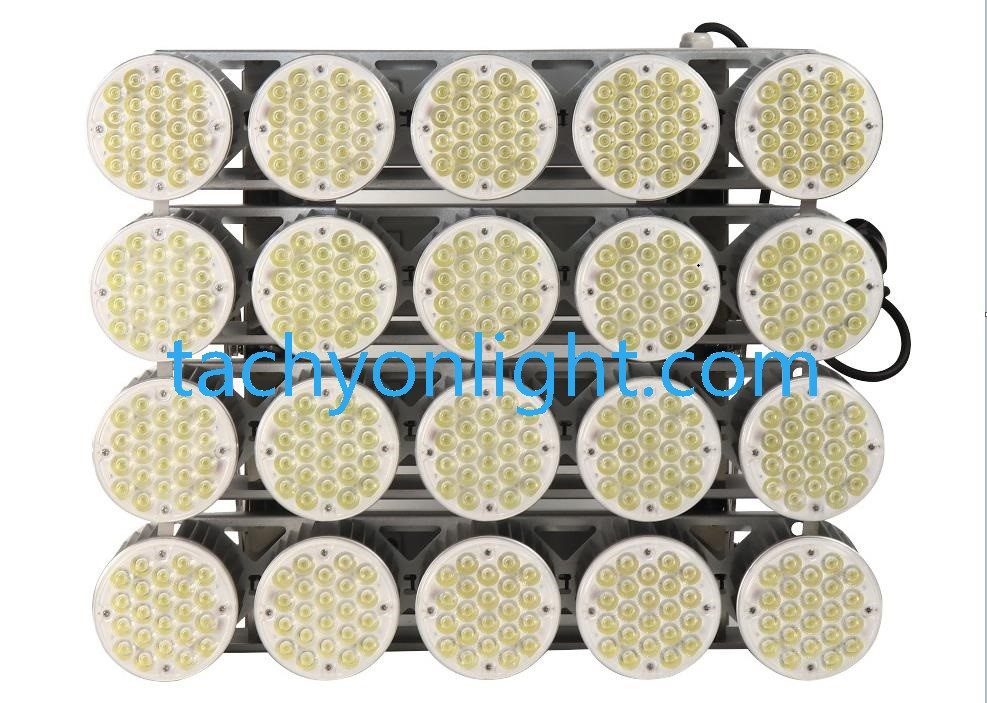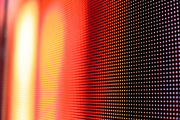What is the light effect of LED lamps
LED lighting efficiency (luminous efficiency), the luminous flux emitted by the light source divided by the power consumed by the light source. It is an important indicator to measure the energy saving of light sources.
Luminous efficiency is a parameter of a light source, it is the ratio of luminous flux to power. Depending on the situation, this power can refer to the radiant flux output by the light source, or the energy provided by the light source (which can be electrical energy, chemical energy, etc.). The power in the luminous efficiency usually depends on the situation, but in many cases it is unknown.
Due to the structure of the human eye, not all wavelengths of light have the same visibility. The spectrum of infrared light and ultraviolet light does not affect the luminous efficiency. The luminous efficiency of the light source is related to the light source’s ability to convert energy into electromagnetic radiation and the human eye’s ability to perceive the emitted radiation.
luminous flux
Luminous flux refers to the radiant power that the human eye can feel, which is equal to the product of the radiant energy of a certain band per unit time and the relative viewing rate of the band. Because human eyes have different relative viewing rates for light of different wavelengths, when the radiation power of light of different wavelengths is equal, the luminous flux is not equal. To
Luminous flux refers to the derived amount of radiant flux evaluated in accordance with the standard human visual characteristics in accordance with international regulations, and is represented by the symbol Φ (or Φr). The unit of luminous flux is lm (lumens). 1lm is equal to the luminous flux emitted by a point light source with a uniform luminous intensity of 1cd (candela) within 1sr (steradian) unit solid angle, that is, 1lm=1 cd·sr.
The nominal luminous flux of a 40W ordinary incandescent lamp is 360lm, the nominal luminous flux of 40W daylight fluorescent lamp is 2100 lm, the luminous flux of 400W standard high pressure sodium lamp can reach 48,000 lm, and the luminous flux of 400W LED lamp produced by Tachyon can reach 80,000 lm.
Luminous Efficiency Brightness
Brightness refers to the physical quantity of the intensity (reflection) of the surface of the luminous body (reflector). The human eye observes the light source from one direction. The ratio of the light intensity in this direction to the area of the light source “seen” by the human eye is defined as the unit brightness of the light source, that is, the luminous intensity per unit projected area. The brightness is represented by the symbol L, and the unit of brightness is candela/square meter (cd/m2).
The brightness of the light source is related to the surface area of the luminous body. Under the same light intensity, if the luminous area is large, it will be dark, and vice versa.
The brightness is also related to the direction of the light-emitting surface. The brightness value of the same light-emitting surface in different directions is also different, which is usually measured in a direction perpendicular to the line of sight.
For example, in common lighting, if you want to reduce the brightness of the subject, especially the face of a person, the normal way is to extend the distance of the lamp or add soft paper in front of the lamp to reduce the intensity of the light.
The Advantages of LED Light
Luminous efficiency (lm/w): The luminous flux emitted by the light source is divided by du by the power consumed by the light source. It is an important indicator to measure the energy saving of light sources.
LED, also known as diode, is a solid-state semiconductor device that can convert electrical energy into visible light. So what are the advantages of LED lights? Mainly manifested in the following four aspects:
- High efficiency and energy saving
Low-voltage drive, ultra-low power consumption (0.05W per tube). The luminous power conversion is close to 98%, and the LED lamps are more than 60%-80% energy-saving than traditional energy-saving lighting lamps, and they are flexible and convenient to install, durable and reliable.
- Green and environmental protection
Light has no ultraviolet rays, no infrared rays, no radiation, soft lighting effect, no flicker, frequency start, belongs to the real green environmental protection lighting source, LED lighting does not generate heat, does not contain harmful elements such as mercury and xenon, which is conducive to recycling and secondary use.
3, super long life
Strong shock resistance, strong dust resistance, low energy consumption, low voltage and current required, low heat, less luminous heat, no safety hazards, high safety factor, LED lighting is a solid light source, 
epoxy resin encapsulation, and the luminous part is not easy Looseness. There are no shortcomings such as easy burning of the filament, thermal deposition, high light decay, etc. The service life can reach 30,000 to 50,000 hours, which is 30 times that of ordinary bulbs, which is equivalent to three years of uninterrupted lighting.
- wide application range
Home lighting, ceiling downlights, office lighting, community lighting, shopping malls, supermarkets, stall shops, restaurants, hotels, bars, coffee shops, western restaurants, entertainment venues, family night lights, festive lights. Solar lighting applications, urban lighting Widely used in landscaping engineering.
Several Related Common Concepts of LED Lights
◇Luminous flux (lm):
The total amount of visible light emitted by the light source per second. For example, a 100-watt (w) bulb can produce 1500lm, and a 40-watt (w) fluorescent lamp can produce 3500lm luminous flux.
◇Luminous intensity (cd):
The luminous flux emitted by the light source in a unit solid angle, that is, the density of the luminous flux emitted by the light source in a selected direction in space. The unit of light intensity is Cantera (cd), also known as candlelight. For example: 1 unit of solid angle emits 1 lumens of light is called 1 cantra (1cd).
◇Brightness:
Light-emitting diode is a kind of light-emitting device. Brightness refers to the illuminance per unit area. The unit is candlelight/square meter. The standard driving current of light-emitting diode is 20mA.
◇Color temperature (k):
expressed in absolute temperature (k=℃+273.15) K, that is, heating a black body, when the temperature rises to a certain level, the color gradually changes from dark red-light red-orange red-yellow-yellow white-white-blue white -Blue change. When a light source has the same color as a black body, we call the absolute temperature of the black body at that time the color temperature of the light source. For example, when the black body is heated to appear deep red, the temperature is about 550℃, that is, the color temperature is 823K.
◇Color rendering (Ra):
The degree to which the light source presents the color of the object itself is called color rendering. That is, how vivid the colors are. The International Commission on Illumination CIE sets the color rendering index of the sun at 100. The color rendering index of various light sources is different. Such as: incandescent lamp Ra≥90, fluorescent lamp Ra=60~90.
◇Viewing angle:
The angle is divided into X-axis (left and right) and Y-axis (up and down). When the central axis is 1, the angle is the viewing angle when the brightness of the left and right or up and down axes reaches 1/2, for example, 70 ° The viewing angle means 35 ° up and down or left and right from the center point.
◇Wavelength:
The wavelength of the light emitted by the diode, generally the red wavelength is 620-660nm, pure green 520-530nm, blue 470-480nm, yellow 580-890nm, yellow-green 550-570nm, please refer to the chromaticity diagram, which is different The color of the light emitted by the wavelength is different; the mixed light of the two colors is also different.
◇Quaternary system:
refers to the light-emitting diode made of the four chemical elements of ALInGaP, which can emit light between yellow-green/yellow/orange/red (wavelength 550-630nm), and has the characteristics of high brightness and low attenuation. Currently the mainstream product of outdoor LEDs.
◇Pure green/yellow-green:
Traditional green LEDs are mainly yellow-green, with wavelengths ranging from 550-570nm, low price, low brightness, and fast attenuation. In 1994, Japan Asia Manufacturing Company produced pure green (wavelength 520-530nm) price High, high brightness, slow attenuation, widely used in outdoor display screens, these two products are very different, you must distinguish clearly when designing.
◇Monochrome/dual-color/full-color screen:
The three primary colors are red/green/blue; if a pixel tube contains these three light-emitting diodes, it is called a full-color display; if there is only red + green, it is called a dual-color screen. If there is only one color such as red or yellow, it is called a monochromatic display. The monochromatic display is mainly used for playing pure text content, the dual primary color is mainly used for text + pattern + animation, and the full color screen is mainly used for broadcasting video signals. .
◇Lifespan:
Refers to the time when the brightness of the light-emitting diode reaches half of the initial value, and then becomes the half-life. Different chips have different service lives in different environments.
◇Brightness attenuation curve:
The curve of brightness and time of various chips under certain conditions (temperature, current); this curve can truly understand the characteristics of the chip.
◇Chip/single lamp/pixel tube:
Diode light-emitting tube is a semiconductor material, and its light-emitting element is called a chip, and the smallest unit that can be lighted by a chip is called a single lamp; many small lamps are assembled and encapsulated into a large tube Add the outer cover to become the pixel tube.
◇Dot diameter: refers to the diameter of the pixel tube.
◇Dot spacing:
refers to the distance between the centers of two adjacent pixel tubes, the standard resolvable lamp spot spacing = lamp spot diameter × 1.25.
◇Visible distance:
refers to the distance at which the content displayed on the display can be clearly seen. This distance is related to the character height of the displayed text. Simple quick calculation formula: ---Minimum visible distance: 50× character height (m) ---The farthest visual distance: 200 characters high height (m)
◇Automatic brightness adjustment:
The light-emitting diode adjusts its own brightness according to the intensity of the environment. Generally, the current is reduced to achieve the purpose of reducing the brightness.
◇Dot density: refers to the number of pixel tubes per square meter.
◇Operating temperature: The lowest and highest temperature that the display can be used normally.
V represents voltage. F stands for positive. I stands for current. R stands for reverse. WL stands for wavelength. Therefore: VF represents the forward voltage. Generally, the vf of low-power LED red, yellow, orange, and yellow-green is 1.8-2.4v, and the vf of pure green, blue and white is 3.0-3.6v. IF is the forward current. Generally, the IF of low-power LEDs is 20mA. IR is the reverse current, it depends on the customer’s requirements. Generally, it is measured under the reverse voltage of 5v, which is less than 10uA (microampere), less than 5uA and 0uA. WL is the wavelength of light. Visible light has its own wavelength. Different wavelengths correspond to different colors. For example, red light is generally 615-650nm (nanometer), and blue light is generally 450-475nm. Since white light is modulated by blue chip + phosphor, it has no wavelength and is measured by color temperature (below 3000k is yellowish. 3000k-7000k is white, and above 7000k is blue).
The concept of LED light source luminous efficiency and LED lamp efficiency
The luminous efficacy of a source is defined as the ratio of the luminous flux emitted by the light source to the electric power consumed.
The definition of LED luminaire efficacy (luminaire efficacy) refers to the ratio of the initial total luminous flux emitted by the luminaire to the power consumed under the claimed use conditions of the luminaire, in lm/W.
“Light efficiency” is used to evaluate LED light sources, and “efficiency” is used to evaluate LED lamps. Both the light efficiency of LED light sources and the efficiency of LED lamps represent the efficiency of converting electrical energy into light energy. It is an index describing the energy-saving characteristics of lighting products, but its connotation is different.
Different luminous flux
The luminous flux of the light source in the luminous effect of the LED light source refers to the luminous flux emitted by the bare light source (the state has not been installed in the lamp). The LED light source can be an integrated LED lamp or an integrated LED module, a semi-integrated LED lamp or a semi-integrated LED module, or a non-integrated LED lamp or a non-integrated LED module.
The molecular luminous flux in the efficiency of LED lamps refers to the luminous flux emitted by the lamp after the light source is installed in the lamp and the required LED control device or the power supply of the LED control device is used. The LED control device or the power supply of the LED control device can be integral, built-in or independent. Lamps using LED light sources may use reflectors and diffusers.
The light source installed in the luminaire may be a single light source or a collection of multiple light sources, but due to the efficiency loss caused by the interaction of heat and electric energy, and the efficiency of the luminaire optical system, the luminous flux of the LED luminaire is not equal to the luminous flux of the LED light source or its simple Accumulate.
The measurement state of the luminous flux in the luminous efficiency of the LED light source is different from the luminous flux in the luminaire efficiency. The former is measured in the pulse state, and the latter is measured in the steady state.
The light in the luminous effect of the LED light source is non-directional. As long as the light can be emitted, the north, south, east, and west do not matter. The light in the effectiveness of LED lamps is directional, and the light needs to be sent to useful areas.
In the case of using the same LED light source, the luminous flux of the LED lamp is smaller than that of the LED light source.
Different input power
The denominator in the luminous efficiency of the LED light source is different from the denominator in the efficiency of the LED lamp. For example, for a non-integrated LED module, the electrical power consumed by the LED light source only refers to the power consumed by the LED module, and does not include the power consumed by the LED control device.
The electrical power consumed in the effectiveness of the LED lamp refers to the input power of the lamp, including not only the LED light source, but also the power consumed by the LED control device. The electric power consumed by the LED lamp is greater than the electric power consumed by the LED light source.
The relationship between the efficacy of LED lamps and the luminous efficiency of LED light sources
The relationship between the efficacy of LED lamps and the luminous efficiency of LED light sources Due to the different ranges of luminous flux and electric power involved, the luminous efficiency of the LED light source is different from the efficiency of the LED lamp, and the luminous efficiency of the light source is far greater than that of the lamp.
One is because after the LED enters the lamp, the junction temperature increases and the light output decreases (heat loss); the other is because the light source enters the lamp and the LED control device or its power supply is used for system loss;
The third is the loss of light after passing through the optical system of the lamp, that is, the lamp efficiency (light loss). Lamp efficiency = light source luminous efficiency×(1-heat loss after entering the lamp)%×(1-system loss)×(1-light loss after entering the lamp)%
From the above analysis, it can be seen that the luminous efficiency of the light source and the efficiency of the lamp are completely different and should not be confused.







